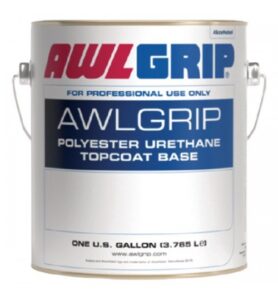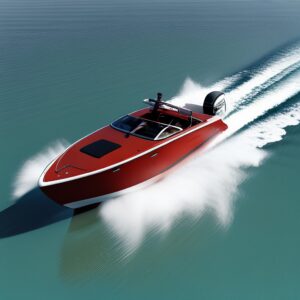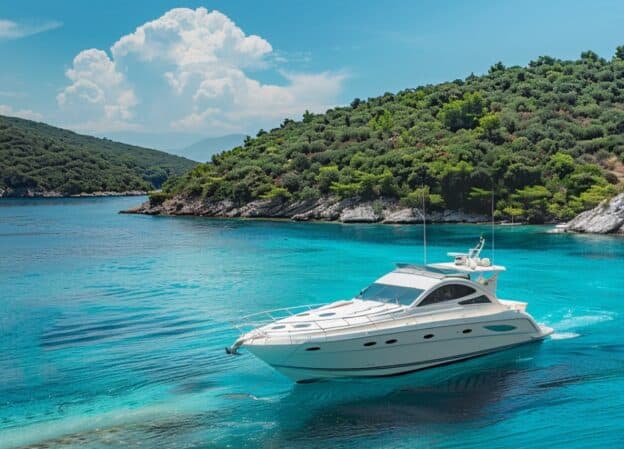In this guide to awlgrip paint, we’ll address some of the most frequently asked questions we get every day, (well Monday to Friday to be exact), about Awlgrip Marine paint. We hope this can help you make an informed decision and achieve the results you want.
1. What is Awlgrip paint?
Awlgrip is a high-performance marine coating renowned for its durability, gloss retention, and superior finish. It is specially formulated for use on boats and yachts, providing excellent protection against harsh marine environments.

2. How do I apply Awlgrip paint?
Like all painting projects, proper surface preparation is key to successful application. Start by thoroughly cleaning and sanding the surface, then apply the paint using spraying, rolling, or brushing. Depending on which Awlgrip paint you are using you will want to follow the Awlgrip Marine’s instructions regarding thinning ratios and application temperature for best results.
3. Is Awlgrip paint suitable for my boat?
Awlgrip paint is compatible with a wide range of boat materials, including fiberglass, aluminum, steel, and wood. Whether you have a sailboat, powerboat, or yacht, Awlgrip paint can be an excellent paint in providing the protection and aesthetic appeal your vessel deserves.

4. What are the advantages of using Awlgrip paint?
Awlgrip paint offers numerous benefits, including exceptional durability, UV resistance, chemical resistance, and long-lasting gloss retention. It provides superior protection against fading, chalking, and abrasion, ensuring your boat looks pristine for years to come.
5. How long does Awlgrip paint take to dry/cure?
Awlgrip typically dries to the touch within a few hours and fully cures within 24 to 48 hours, depending on environmental conditions such as temperature and humidity. Proper curing is essential for optimal performance and durability.
6. Can Awlgrip paint be applied over existing coatings?
In most cases, it can be applied over properly prepared existing coatings. However, it’s essential to ensure good adhesion by thoroughly cleaning and sanding the surface and using compatible primers if necessary.
7. How do I maintain Awlgrip paint?
Regular maintenance is key to preserving the beauty and integrity of Awlgrip paint. Clean the surface regularly with mild soap and water, avoid harsh chemicals and abrasive cleaners, and apply a quality wax or polish to protect the finish from UV damage and oxidation.
8. Is Awlgrip paint toxic?
While Awlgrip paint contains solvents and other chemicals, proper ventilation and safety precautions can minimize exposure to harmful fumes. Always wear appropriate personal protective equipment and work in a well-ventilated area.
9. Can Awlgrip paint be used below the waterline?
Awlgrip paint is not typically recommended for below-the-waterline applications, as it may not provide sufficient protection against osmosis and marine growth.
10. How can I achieve a specific finish with Awlgrip paint?
Whether you’re aiming for a high-gloss, matte, or metallic finish, Awlgrip paint offers versatility and customization options. Experiment with additives, sanding techniques, and topcoat options to achieve the perfect finish for your boat.
These are most of the frequently asked questions we receive. Now you’re equipped to embark on your Awlgrip painting project with confidence. As we field more questions we’ll update this post. Remember to prioritize proper surface preparation, follow manufacturer guidelines, and invest in quality materials for outstanding results that will have your vessel standing out in the water.

If you have any questions feel free to contact the Bottom Paint Store technical support team 800.555.2313.

